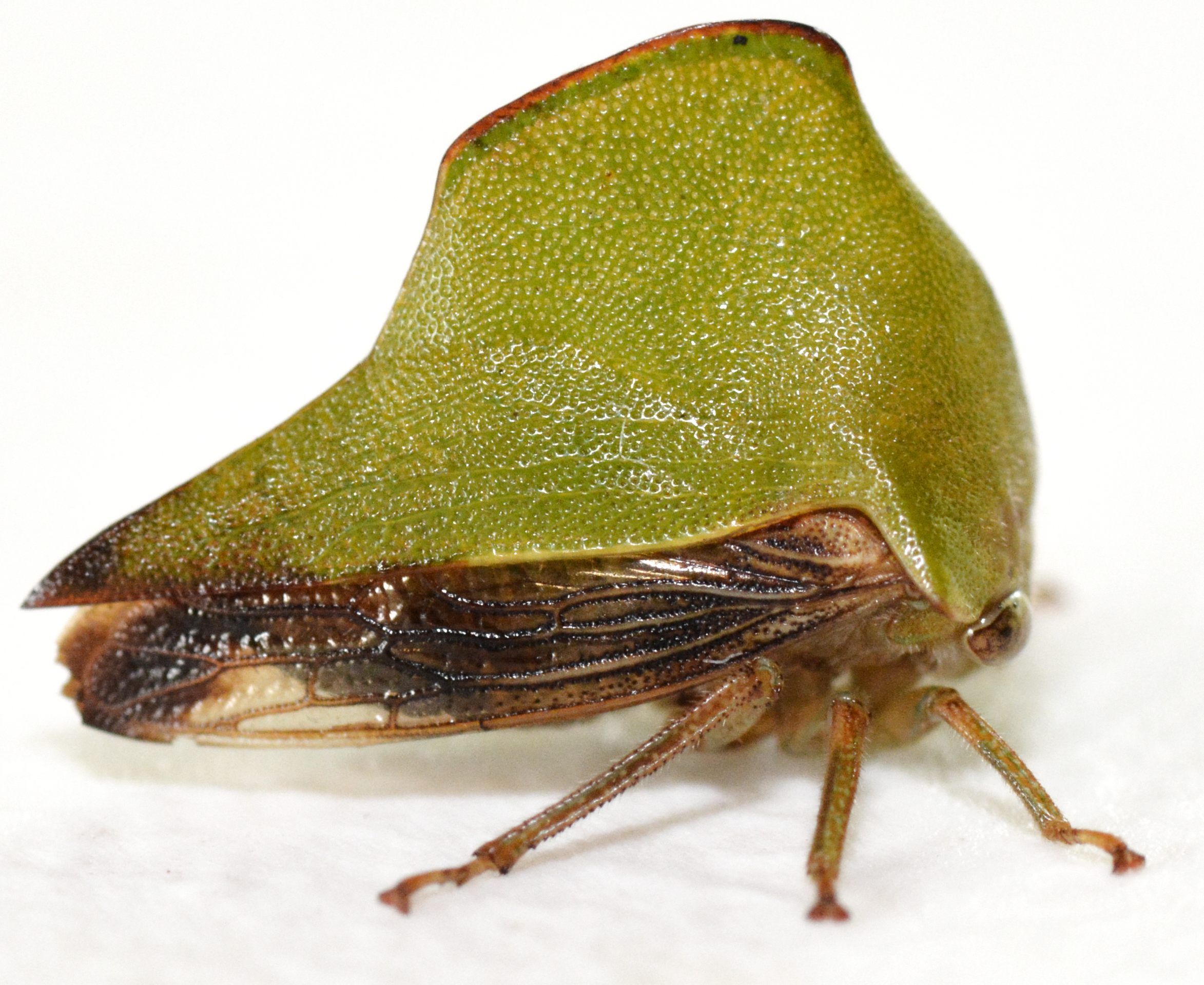Identification
Online Photographs: BugGuide , GBIF iNaturalist Google Description: The pronotal color of this species is sexually dimorphic. Females are a uniform yellow-green, while males are yellow-brown with prominent lateral dark stripes on the posterior edge of the pronotoum, continuing to form a transverse band; the anterior part of the crest may also be a dark brown color. The posterior part of the pronotum is a reddish-brown, and in both sexes the wings have a dark brown tip. The pronotal crest is quadrate, prominent, highly elevated, and smoothly textured; the crest is much more broad in females than males. Males are 11 mm long while females are 12 mm (FSCA ). (Wallace 2015 )
Habitats and Life History
Habitats: Plant Associates: Castanea dentata (American chestnut), Carya (hickory), Carya cordiformis (bitternut hickory), Carya illinoinensis (pecan), Carya ovata (shagbark hickory), Carya glabra (pignut hickory), Carya pallida (sand hickory), Carya tomentosa (mockernut hickory), Juglans (walnut) [nymph on this host], J. cinerea (butternut), J. nigra (black walnut), Parthenocissus quinquefolia (Virginia creeper), Quercus alba (white oak), Q. macrocarpa (bur oak), Q. phellos (willow oak), Robinia pseudoacacia (black locust), Tilia americana (American basswood), Vitis (grape) (Wallace 2014 ).Behavior: Can be attracted at night with a light.Comment: Males of this species could perhaps be confused with T. tristis , a species (particularly males) that has a pale middle of the pronotum and crest contrasting with dark sides. Note though that in T. tristis , the front of the pronotum is much darker.
This species was formerly called Telamona unicolor, but recently it was determined that T. unicolor is a synonym of T. excelsa. The type (initial specimen on which species was described) of T. excelsa was from Mexico and that of T. unicolor from NY, but the host plant for both, Carya, extends from Canada into Central America, which helped confirm the synonymy of the two species. (Wallace 2015 )
Status: NativeGlobal and State Rank:

 »
»



 »
»

